Cetaceans in the Bay of Biscay? Yes!
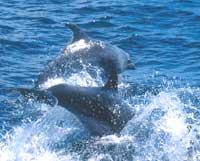
On August 13 we moored in Elantxobe to spend the night there. Some guys welcomed us and we had a little conversation with them. The bravest did not believe in what we said. "Whales? Yes, well, long ago they disappeared… The last one was caught in Orio”.
They had it well learned and it is difficult to fight it. Convincing adults requires testing, something you can see, touch, or at least measure. But even though the children see the entire whale, they hardly believed it.
Our main argument is that to see whales you have to go out to sea and be lucky. "When there were whales in the sea, the sailors saw them from the watchtowers of the coast, there was no need to go to the open sea," they said. They said goodbye with a wicked smile and left.
They were coastal children, of a sailor nature, formed by fathers and mothers of the coast. If they did not believe us, who would believe us?
In the sea
Every morning we went out to the sea in search of cetaceans. This is one of the campaigns organized by the Association of Whales and Izurde Euskadi (EIBE).
A few miles we sailed north, then observed the surroundings in one direction or another and turned south in the afternoon. We spent 8 hours a day at sea, with eyes open, watching on the boat.
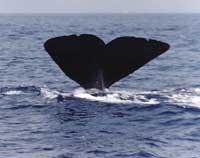
We have to recognize that the boys of Elantxobe were not entirely wrong, we did not see whales during the whole campaign. They are, but we did not see them. We only had to believe biologists. But, to see or not, we believed them. However, we saw other cetaceans. The campaign was abundant.
Not all cetaceans are porpoises, dolphins, orcas or whales; there are also 'intermediate' species such as pilot dolphin or cuvier whales. All of them are divided into odontocetos and mysticetos, that is, toothed and beard.
However, other characteristics are also important for biologists. For example, if you look at behavior, cetaceans can be social or lonely, some especially on the platform by the coast and others on the cliff. Biologists collect many other useful data. Is there breeding in the group? Are they feeding? Perhaps migrating?
The study of cetaceans also requires the study of many other living beings. Of course, August is the time of the bonito for the fishermen of bajura. The bonito migrates trophically, that is, they come to eat. In Galicia marine nutrients emerge that are dispersed throughout the Gulf of Bizkaia, enriching notably. Phytoplankton, zooplankton and plankton appear in the Bay of Biscay. Moreover, it is gradually approaching all the people involved in the trophic chain, including the bonito and the fishermen.
But, in addition to the fishermen, many animals come behind the pretty bristles, such as orcas. Orcas near the Basque coast? For landlords it may surprise, but for those who live in the sea it does not. Sometimes fishermen take out the pretty semi-eaten orcas. Of course, they move from one place to another with food migrations.
Few or many?
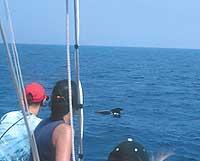
But do the orcas migrate? Do they go from sea to sea after the beautiful ones? Or, standing in a certain area, do they adapt to the diet that the season brings? It seems that one cannot say which of the two is the correct hypothesis or whether the combination of both occurs.
In fact, the cetaceans of the Gulf of Bizkaia have not been very studied. Biologists have not studied as much as bonito, for example. They know which species have been seen there and have hypotheses of presence, but they have few data. They are data based on few inspections, so they cannot assume a concrete hypothesis. They have a very long, yearly research, to begin to draw safe conclusions. This summer's campaign aimed primarily at the first step in research, cetacean research and species identification.
Difficult identification of species. To determine the species to which a cetacean belongs, the biologist must generally be close to the animal. And although he does, he doesn't always identify him. On our trip, biologists often remained in doubt, then they took many photos of the animals and were waiting for the opinion of other biologists.
Follow the whale
Those on earth surprised us at the prudence of biologists. In view of television documentaries, we thought dolphins and whales were much better known. In addition, the details of the investigation seemed obvious to us. Can they not mark dolphins or whales to follow their trajectories? They got much more information.
Research is never so simple. Behind this question is how are cetaceans marked? Is there any method to do so? It already exists. However, marking a whale is not as simple as placing a metal ring on a bird's leg.
To mark cetaceans it is necessary to install radio transmitters on the surface, leaving the antenna outside the surface. However, this method of marking has great difficulties, on the one hand, the cetacean cannot be captured for it, but the transmitter must be installed when it comes to the surface to breathe; on the other hand, biologists cannot know how long it will take; the skin, adipose tissue, maintains that device for a while, but sooner or later it is lost and is not a cheap device.
View photos
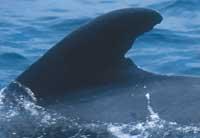
Some biologists have thus marked the sperm whales, but most use other systems to follow the specimens. Among them, the most widespread is photoidentification, that is, the identification of a certain copy according to its physical characteristics through the use of photographs.
Sperm whales are identified according to the shape of the caudal fin. The shape of the caudal fin varies from one sperm whale to another and is easily seen, as each time you breathe it extracts the tail. But sperm whale is a special case, in many cetaceans biologists identify grains based on dorsal fin.
They portray the groups of cetaceans and if the dorsal fins look closely they may appear copies of a previous inspection. This method is used to identify the entire group in some cases.
Of course, the method is neither easy nor precise. For example, brands that have a certain dolphin can change over time, for example, by an accident or a fight. However, many biologists only have this resource to follow cetaceans.
Are there results?
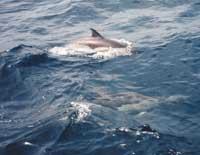
The methods, whales and dolphins have not been studied much in the Gulf of Bizkaia, no populations or migratory habits are known. In addition, most research has been done in summer and has little data, so it is logical that seasonal changes are not known.
These changes have important information, since winter and summer situations of sea nutrients, for example, are very different, so the distribution of populations can vary considerably. In fact, the Basque whale was only fished in winter on the Basque coast, when it came to breed in the Bay of Biscay.
After the campaign ended, we returned to the ground and there were the EIBE biologists. Summer data is now being analyzed. They are very happy with these campaigns, as they have seen numerous species, including live Cuvier whales, which is very difficult to be a fleeting species. The populations of these cetaceans are calculated from specimens that have been stuck on the beaches.
However, scientists still have a lot to do. In short, about thirty inspections have been carried out in summer and, although it is a satisfaction, there are few. What is really under the waves of the Basque Sea?
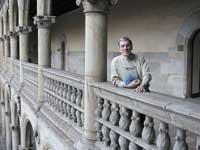
We were proud that the Basques hunted whales. This animal has been exploited since the Middle Ages. The whale provided at least oil, bones and burrs, creating a full market around the whale. Apparently, the whale became a symbol of a fertile economy, so it is exhibited in shields of different peoples. According to the documents, the whale market was abundant between the sixteenth and seventeenth years. for centuries. Perhaps it was more prosperous in the Middle Ages, but few historical documents have come to affirm it.
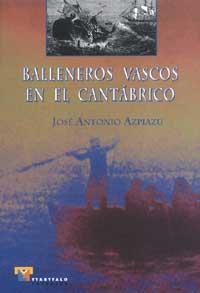
All these documents have been investigated by José Antonio Azpiazu, who has collected his story in the book Balleneros Vascos en el Cantábrico. Among other things, he explains the influence of Newfoundland, where the Basques could hunt much more whales. That is why catches were reduced on the Basque coast, where the Basques bet on America.
But what was attractive to the Basques also became attractive to others, and English, Dutch, etc. began to catch Newfoundland whales. A competition arose in which the government of Philip II was not interested. He did not collaborate.
Therefore, and due to many other factors, the Basques stopped capturing the whale. XIX. In the twentieth century this market was exhausted.
On May 14, 1901 the Oriotars captured the famous final whale. Yes. But by then the whale hunt had already disappeared. The profession had disappeared. So the oriotarras, when they saw the whale, did not know very well how they would be caught. The whale was sick and approached Orio beach. The fishermen got the harpoons and dynamite and captured it. But as there was no market to sell it, they began to exhibit the whale. The body of the animal was converted into a tourist show. Finally, after shaking the banks, they managed to sell the oil extracted from the tongue. They hardly managed to take advantage of the whale, a market that had closed for fifty years. At that time it was also an anecdote. |
Buletina
Bidali zure helbide elektronikoa eta jaso asteroko buletina zure sarrera-ontzian











